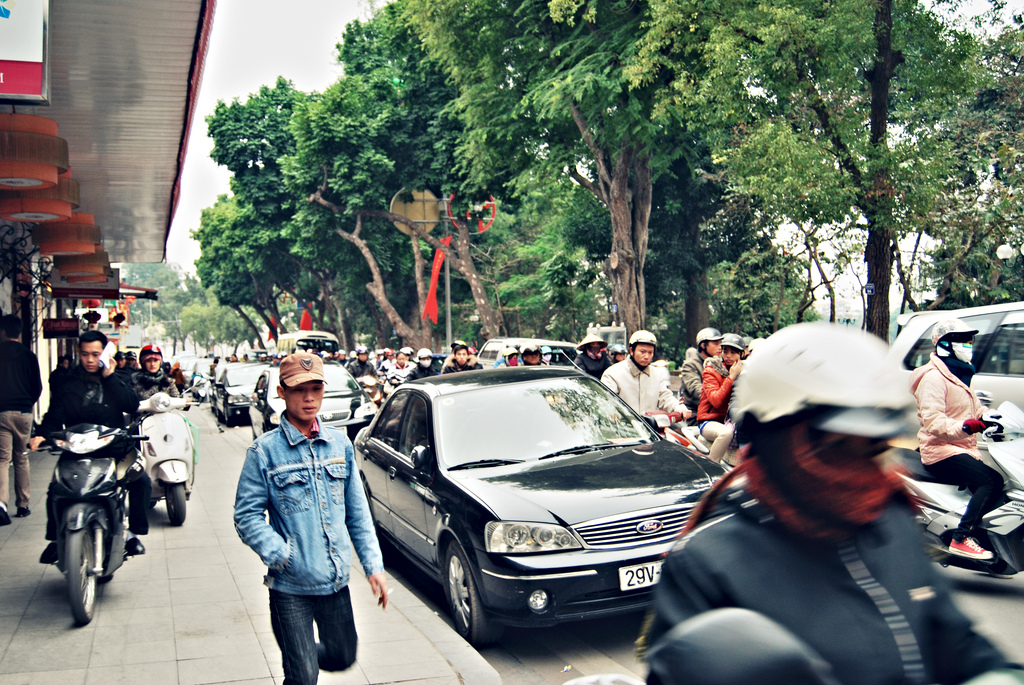Led by double-digit growth in Singapore, the Philippines and Vietnam, automobile sales in Southeast Asia increased 3 percent last year while the regions two-wheeler sales marginally declined, according to figures released by the ASEAN Automotive Federation last week.
Total vehicle sales in the 10-country Association of Southeast Asian Nations reached 3.16 million units in 2016. Sales of passenger vehicles and commercial vehicles climbed in Singapore, the Philippines and Vietnam by 41 percent, 25 percent and 29 percent, respectively, while those of Malaysia, Brunei and Thailand declined.
Weak inflationary pressure and the availability of cheap credit contributed to the Philippines increased sales, said Business Monitor International Research.
Singapores automotive market recorded a good year of sales due to the cyclical nature of its Certificate of Entitlement system of car ownership licenses, which need to be renewed every 10 years, BMI Research said.
However, such upticks in Singapore are unlikely to continue in coming years. The slowing of replacement sales and the threat of a slowdown in nearby China will prevent total vehicle sales from reaching their peak levels of 137,597 units achieved in 2006 over the remainder of our forecast period to 2020, notes a BMI Research report. The governments drive to reduce congestion and carbon emissions will also dampen vehicle sales. The government is geared toward a car-light nation and is investing heavily in public transport, such as rail.
Total sales of two-wheelers in the ASEAN region fell to 9.5 million units, shrinking 7 percent in Indonesia alone.
However, two-wheeler sales in the Philippines rose 34 percent. The flexibility of motorcycles and scooters as a means of transport are suitable for [the Philippines] high-volume traffic, especially in the major cities, said a spokeswoman for the Motorcycle Development Program Participants Association Inc. The rising use of motorcycles for the delivery of goods as well as [taxi services] have also increased the demand for two-wheelers. In the provinces, they are even used with an extension at the side…to transport goods and people.
Production of passenger vehicles in the region increased 3 percent to 4 million, with Vietnam showing the largest growth, at a 38 percent increase. Total production of motorcycles and scooters increased 9 percent to 3.3 million units.
The Philippines output shined. Apart from 18 percent growth in automobile production, the archipelago nation expanded production of two-wheelers by 31 percent, the highest increase in the region.
The approval of Mitsubishi and Toyota as participating car makers of the Philippines Comprehensive Automotive Resurgence Strategy Program will help boost domestic passenger vehicle production and create opportunities for component suppliers, BMI Research said in its July 2016 issue of Automotives Insight. As a result, we are revising up our passenger vehicle production forecast to a 37 percent average annual growth over 2017-2020, up from previously forecast average annual growth of 13 percent.
Gross domestic product will likely play a role in the countries auto sales in coming years. According to the Asian Development Banks forecast for 2017, Vietnams and the Philippines GDPs are expected to continue to grow in the range of 6 percent, while more developed markets such as Malaysia and Thailand will remain in the range of 4 percent and 3 percent, respectively.
Photo: Amy Thibodeau / Flickr
